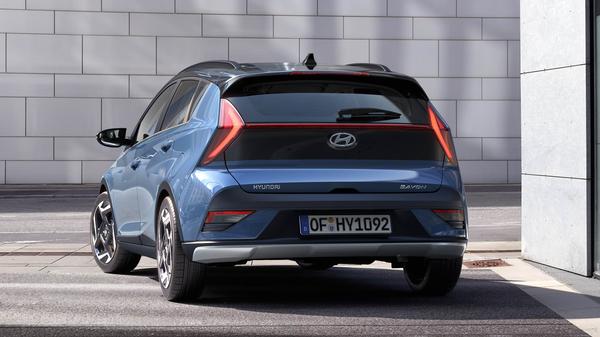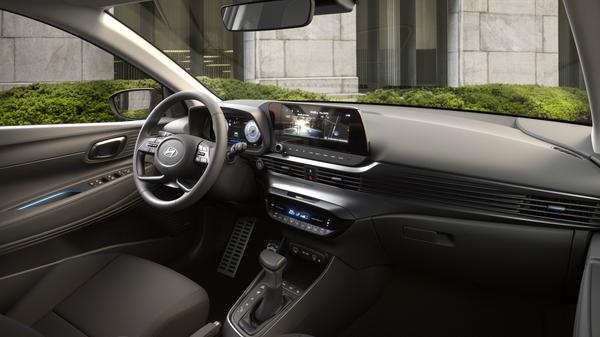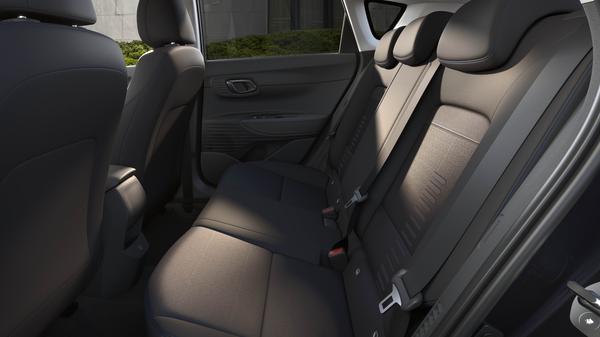News
Updated 2024 Hyundai Bayon coming soon – price, specs and release info
Hyundai updates its ‘other’ small crossover with some styling and equipment tweaks, and a little price bump


Words by: Mark Nichol
Published on 30 May 2024 | 0 min read
Hyundai has two small-ish crossovers on its books, the Kona and the other one. The Bayon here is the other one. Nothing wrong with it – a solid 3.5-star car as far as we're concerned – but it’s never really stood out in a field that includes the Ford Puma, Peugeot 2008, Skoda Kamiq and, again, arguably the Kona.
So now it’s had a little facelift. Here’s what’s happened… • New full-length LED light strip stretches across the front; the grille looks a bit different • LED headlamps now standard across all trims • New design for the rear bumper; updated 16- and 17-inch wheel designs • Four new paint colours and a contrasting roof option • ‘Vibrant Blue’ interior colour pack aims to brighten up the interior • It costs a bit more now, up by £900 at the starting point, now priced from £22,480 • You can order one from today (6 June 2024)
So now it’s had a little facelift. Here’s what’s happened… • New full-length LED light strip stretches across the front; the grille looks a bit different • LED headlamps now standard across all trims • New design for the rear bumper; updated 16- and 17-inch wheel designs • Four new paint colours and a contrasting roof option • ‘Vibrant Blue’ interior colour pack aims to brighten up the interior • It costs a bit more now, up by £900 at the starting point, now priced from £22,480 • You can order one from today (6 June 2024)

Design and models available
The Bayon is a fairly basic compact crossover that provides decent interior space and quality for a reasonable price. It’s based on the Hyundai i20, and the sole engine choice is a 100 horsepower 1.0-litre petrol with either a six-speed manual or a seven-speed automatic gearbox. Hyundai was never going to spend a fortune redeveloping this. So at the mid-stage of its life (it arrived in 2021), the company has done the minimum you’d expect: redesigning both ends slightly, tweaking the paint options and offering some new wheels. The front end now gets a full-width LED strip (as per the Kona), and the rear bumper… looks a bit different. Four new colours include two shades of blue (called Vibrant and Meta, the latter of which may or may not be the same sort of blue that Facebook uses), a shade of grey, and a tone called Lucid Lime metallic. No pictures of the flashy lime, sadly. It sounds funky though. You can get a contrasting black roof and mirrors with top-spec Premium cars now, too.
Interior and technology
No fundamental changes to the interior, but you can now order a ‘vibrant blue’ interior colour pack with every trim level - bright blue accents for the door panels, air vents, and dashboard stitching. There are 64 colour choices for the interior lighting. The three trim levels, called Advance, Premium and Ultimate, are as they were. Every version gets the same twin 10-inch dashboard screens, navigation, air con, cruise control and alloy wheels. Plenty of safety kit as standard, including all manner of airbags, lane keeping assist, automatic collision avoidance, rear parking sensors and a rearview camera. If you want adaptable cruise control, it can be yours as an £800 'Driver Assistance Pack' option with a mid- or top-spec Bayon.
Engines
Just the one engine, a 1.0-litre three-cylinder turbo petrol with 100 horsepower. It’s a significant change from the outgoing model, which came with 100- and 120 horsepower options, both with mild hybrid tech. This new one doesn’t have the electrification, and is therefore a little less efficient, returning 51.4mpg regardless of gearbox. The outgoing 1.0-litre engine did 53.3mpg, which is probably why Hyundai isn’t making a big song and dance about making the change. Unusually, though, the automatic version gets more torque (200Nm, up from 173Nm in the manual), but is a bit slower to 62mph. The auto takes 12.4 seconds, and the manual 11.3.
Price and release
Order books for the new Bayon open today, with prices starting at £22,480. The most you’ll pay for one before options is an Ultimate car with an auto, which will set you back £26,530. It’s £565 for metallic paint.What other cars from Hyundai are due?
The Bayon represents the more ‘regular’ end of Hyundai family cars, but Hyundai has been busy catering to the more exotic end of the market of late. Having just released the 650 horsepower Ioniq 5 N, it’s about to give the same treatment to the Ioniq 6. There’s a new Santa Fe family crossover coming in 2025, as well as a new Ioniq 7, a massive boxy SUV in the mould of the Kia EV9.